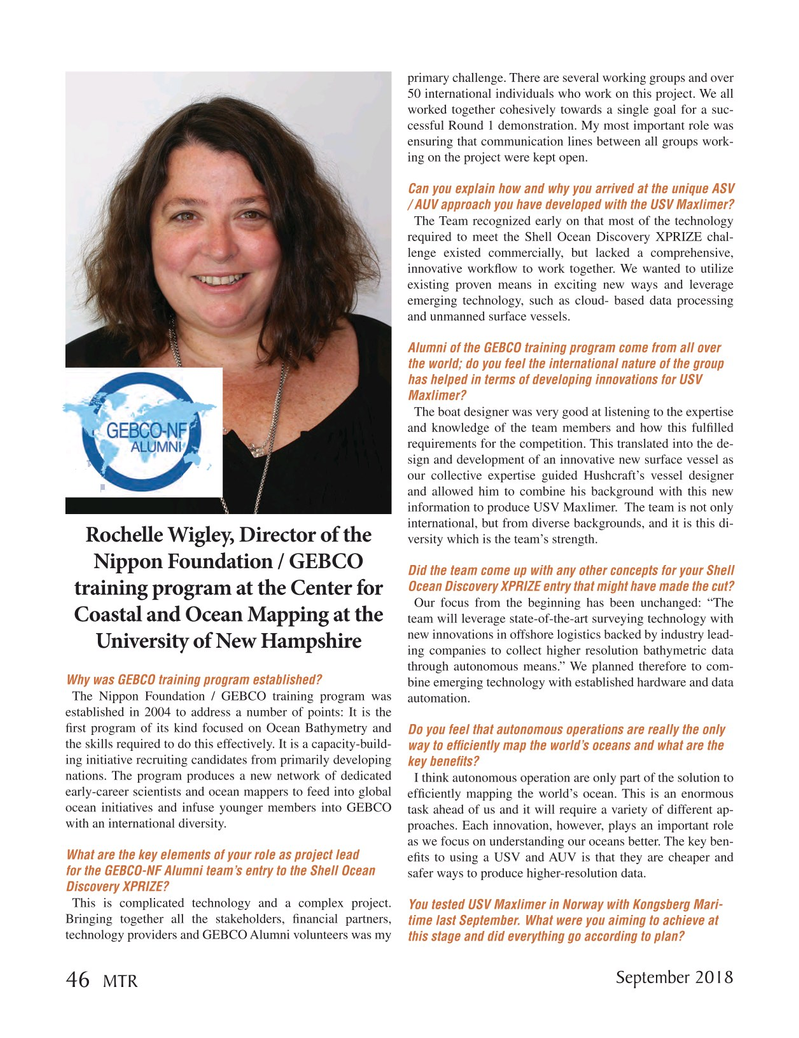
Page 46: of Marine Technology Magazine (September 2018)
Autonomous Vehicle Operations
Read this page in Pdf, Flash or Html5 edition of September 2018 Marine Technology Magazine
primary challenge. There are several working groups and over 50 international individuals who work on this project. We all worked together cohesively towards a single goal for a suc- cessful Round 1 demonstration. My most important role was ensuring that communication lines between all groups work- ing on the project were kept open.
Can you explain how and why you arrived at the unique ASV / AUV approach you have developed with the USV Maxlimer?
The Team recognized early on that most of the technology required to meet the Shell Ocean Discovery XPRIZE chal- lenge existed commercially, but lacked a comprehensive, innovative work? ow to work together. We wanted to utilize existing proven means in exciting new ways and leverage emerging technology, such as cloud- based data processing and unmanned surface vessels.
Alumni of the GEBCO training program come from all over the world; do you feel the international nature of the group has helped in terms of developing innovations for USV
Maxlimer?
The boat designer was very good at listening to the expertise and knowledge of the team members and how this ful? lled requirements for the competition. This translated into the de- sign and development of an innovative new surface vessel as our collective expertise guided Hushcraft’s vessel designer and allowed him to combine his background with this new information to produce USV Maxlimer. The team is not only international, but from diverse backgrounds, and it is this di-
Rochelle Wigley, Director of the versity which is the team’s strength.
Nippon Foundation / GEBCO
Did the team come up with any other concepts for your Shell
Ocean Discovery XPRIZE entry that might have made the cut?
training program at the Center for
Our focus from the beginning has been unchanged: “The
Coastal and Ocean Mapping at the team will leverage state-of-the-art surveying technology with new innovations in offshore logistics backed by industry lead-
University of New Hampshire ing companies to collect higher resolution bathymetric data through autonomous means.” We planned therefore to com-
Why was GEBCO training program established?
bine emerging technology with established hardware and data
The Nippon Foundation / GEBCO training program was automation.
established in 2004 to address a number of points: It is the ? rst program of its kind focused on Ocean Bathymetry and Do you feel that autonomous operations are really the only the skills required to do this effectively. It is a capacity-build- way to ef

 45
45

 47
47
